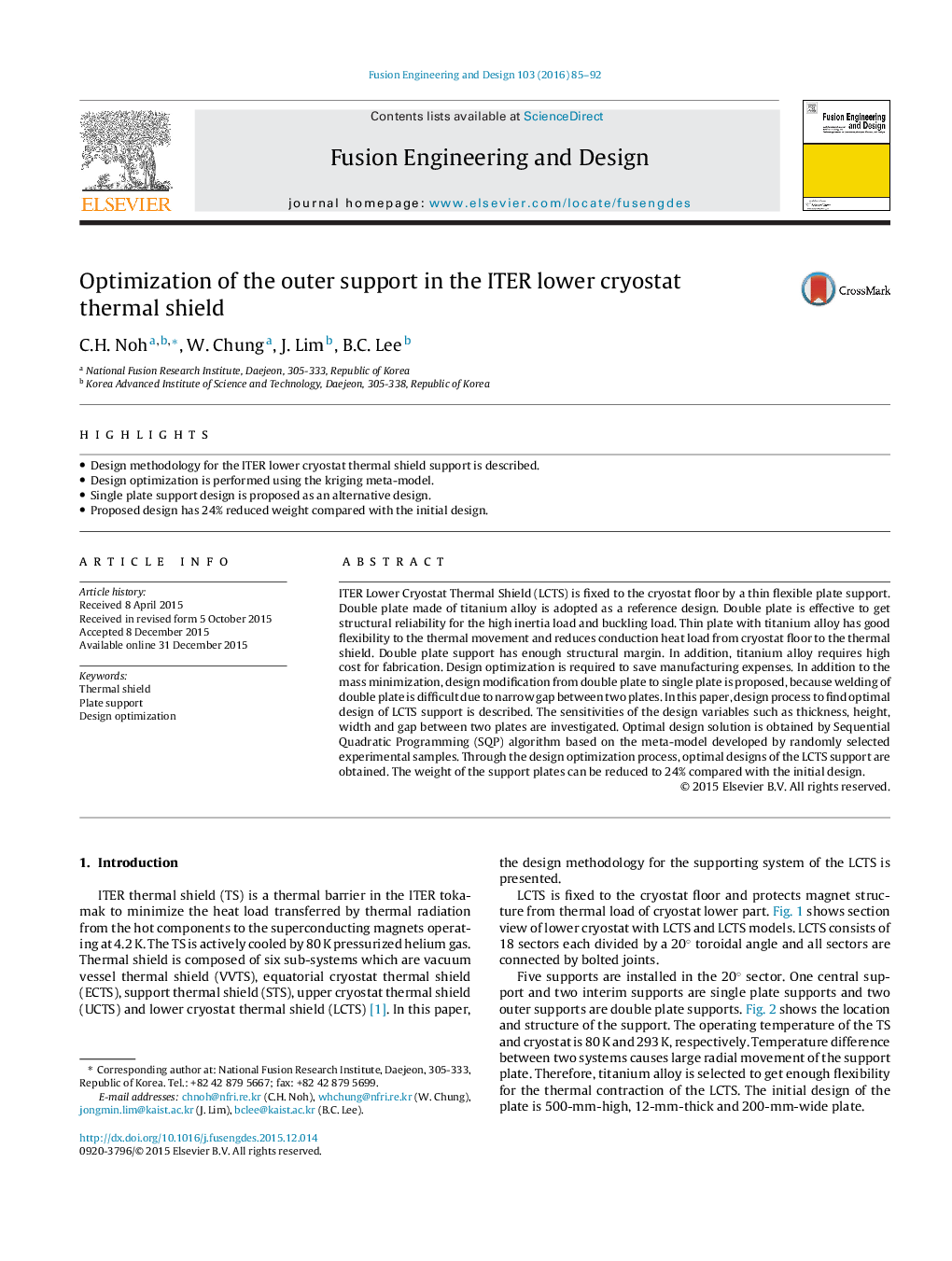| Article ID | Journal | Published Year | Pages | File Type |
|---|---|---|---|---|
| 270879 | Fusion Engineering and Design | 2016 | 8 Pages |
•Design methodology for the ITER lower cryostat thermal shield support is described.•Design optimization is performed using the kriging meta-model.•Single plate support design is proposed as an alternative design.•Proposed design has 24% reduced weight compared with the initial design.
ITER Lower Cryostat Thermal Shield (LCTS) is fixed to the cryostat floor by a thin flexible plate support. Double plate made of titanium alloy is adopted as a reference design. Double plate is effective to get structural reliability for the high inertia load and buckling load. Thin plate with titanium alloy has good flexibility to the thermal movement and reduces conduction heat load from cryostat floor to the thermal shield. Double plate support has enough structural margin. In addition, titanium alloy requires high cost for fabrication. Design optimization is required to save manufacturing expenses. In addition to the mass minimization, design modification from double plate to single plate is proposed, because welding of double plate is difficult due to narrow gap between two plates. In this paper, design process to find optimal design of LCTS support is described. The sensitivities of the design variables such as thickness, height, width and gap between two plates are investigated. Optimal design solution is obtained by Sequential Quadratic Programming (SQP) algorithm based on the meta-model developed by randomly selected experimental samples. Through the design optimization process, optimal designs of the LCTS support are obtained. The weight of the support plates can be reduced to 24% compared with the initial design.
